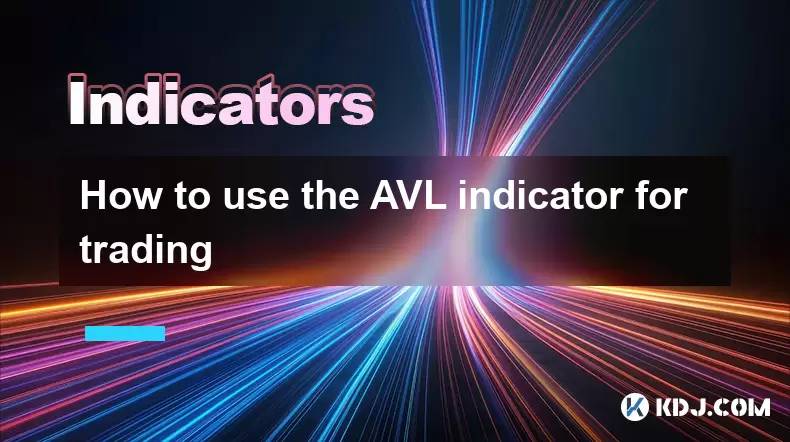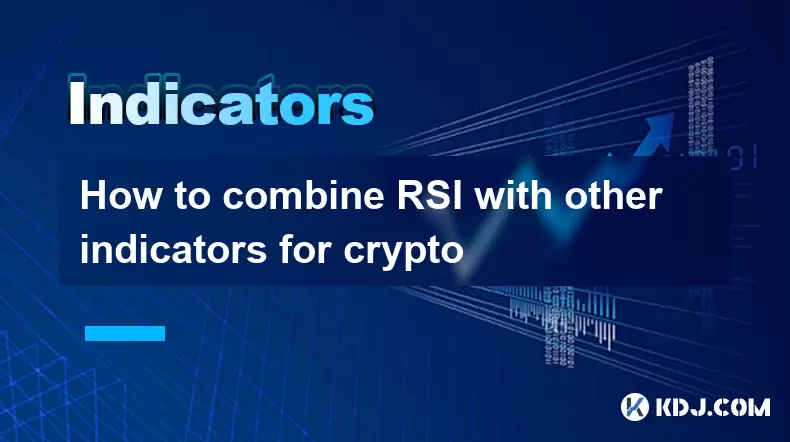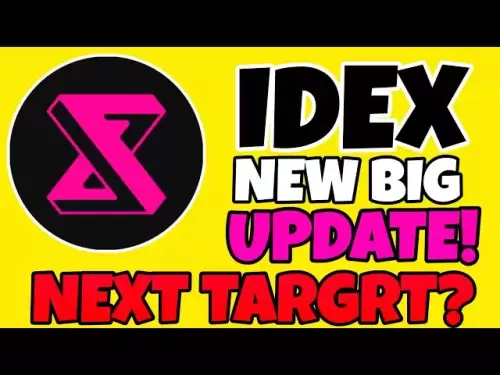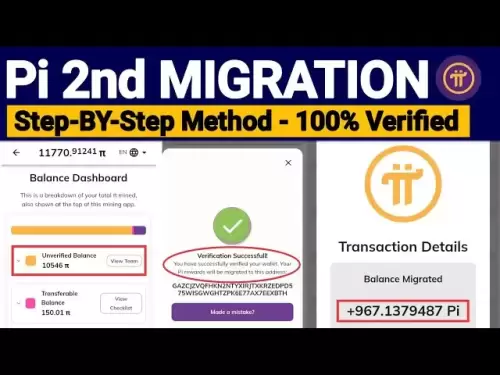-
 Bitcoin
Bitcoin $117,991.5647
-0.03% -
 Ethereum
Ethereum $2,966.4808
0.18% -
 XRP
XRP $2.8076
0.64% -
 Tether USDt
Tether USDt $1.0003
0.00% -
 BNB
BNB $689.9050
-0.63% -
 Solana
Solana $162.0407
-0.80% -
 USDC
USDC $0.9999
0.00% -
 Dogecoin
Dogecoin $0.1995
-1.51% -
 TRON
TRON $0.3001
-1.21% -
 Cardano
Cardano $0.7426
3.25% -
 Hyperliquid
Hyperliquid $47.7978
2.84% -
 Stellar
Stellar $0.4411
16.52% -
 Sui
Sui $3.4267
0.15% -
 Chainlink
Chainlink $15.3148
0.07% -
 Bitcoin Cash
Bitcoin Cash $506.5880
-1.91% -
 Hedera
Hedera $0.2222
12.41% -
 Avalanche
Avalanche $21.2049
1.67% -
 UNUS SED LEO
UNUS SED LEO $9.0606
-0.19% -
 Shiba Inu
Shiba Inu $0.0...01325
-0.86% -
 Toncoin
Toncoin $2.9979
0.32% -
 Litecoin
Litecoin $94.3717
1.13% -
 Polkadot
Polkadot $3.9873
-0.29% -
 Monero
Monero $336.1497
0.92% -
 Dai
Dai $0.9999
-0.01% -
 Uniswap
Uniswap $8.5189
-0.60% -
 Ethena USDe
Ethena USDe $1.0005
-0.04% -
 Pepe
Pepe $0.0...01236
-0.92% -
 Bitget Token
Bitget Token $4.4002
-0.23% -
 Aave
Aave $303.5433
1.05% -
 Bittensor
Bittensor $391.1314
-0.35%
How to use the AVL indicator for trading
The AVL indicator helps crypto traders gauge buying and selling pressure by tracking volume trends, often signaling potential reversals through divergences with price.
Jul 13, 2025 at 12:22 pm

Understanding the Basics of the AVL Indicator
The AVL indicator, also known as the Accumulation Volume Line, is a technical analysis tool used in cryptocurrency trading to measure buying and selling pressure. It tracks volume flow, helping traders identify whether an asset is being accumulated or distributed. The AVL line rises when volume increases on up days and falls when volume increases on down days. Understanding how this works is crucial for interpreting market sentiment accurately.
Unlike simple moving averages, the AVL indicator focuses exclusively on volume rather than price movement. This makes it particularly useful in volatile crypto markets where sudden price swings may not always reflect true demand. When analyzing the AVL chart, traders look for divergences between price action and volume trends to anticipate potential reversals.
Important Note:
Always cross-reference AVL signals with other indicators like RSI or MACD before making a trade decision.Setting Up the AVL Indicator on Trading Platforms
Most major cryptocurrency trading platforms, including Binance, Coinbase Pro, and TradingView, allow users to add the AVL indicator to their charts. Here's how to set it up:
- Navigate to your preferred platform and open the chart of the cryptocurrency you're interested in.
- Click on the "Indicators" button located at the top of the chart window.
- Search for "Accumulation Volume Line" or simply type "AVL."
- Select the indicator and apply it to the chart.
Once added, the AVL line will appear below or alongside the price chart depending on your layout settings. You can customize its color and thickness for better visibility. Some platforms also let you adjust parameters such as timeframes and smoothing periods, though default settings are generally sufficient for most traders.
Make sure to toggle off any conflicting volume indicators to avoid confusion.
Interpreting AVL Signals in Crypto Markets
In cryptocurrency trading, volume often precedes price movement. The AVL indicator helps traders spot early signs of accumulation or distribution by showing whether volume is increasing during bullish or bearish phases.
When the AVL line is rising, it indicates that volume is higher on up days, suggesting institutional or smart money accumulation. Conversely, a falling AVL line implies stronger volume on down days, signaling potential distribution or panic selling.
Key patterns to watch include:
- Divergence: If the price is rising but the AVL line is flat or declining, it could signal weakening momentum.
- Breakouts: A sharp upward move in the AVL line often confirms a breakout in price.
- Trend confirmation: Consistent movement in the AVL line aligns with the prevailing price trend, reinforcing its validity.
Always use candlestick patterns or support/resistance levels to validate these signals.
Using AVL in Conjunction with Price Action
One of the most effective ways to utilize the AVL indicator is by combining it with price action analysis. For example, if a cryptocurrency breaks out above a key resistance level and the AVL line surges simultaneously, it reinforces the strength of the breakout.
Consider the following scenario:
- The price of Bitcoin forms a bullish engulfing pattern near a critical support zone.
- At the same time, the AVL line begins to rise sharply, indicating strong buying volume.
This confluence suggests a high probability of continuation. However, if the AVL line lags behind the price surge, it might indicate a false breakout fueled by retail speculation rather than real demand.
Traders should pay close attention to volume spikes during consolidation phases, as they often precede explosive moves.
Common Mistakes to Avoid When Using AVL
While the AVL indicator is powerful, improper usage can lead to misleading signals. One common mistake is relying solely on AVL without considering broader market conditions. For instance, during low liquidity periods, especially on smaller altcoins, volume data can be erratic and unreliable.
Another pitfall is failing to account for exchange-specific volume discrepancies. Some exchanges report inflated volumes due to wash trading, which can distort the AVL line and lead to incorrect interpretations.
Avoid these errors:
- Ignoring divergence warnings: Disregarding divergences between the AVL line and price can result in missed reversal opportunities.
- Over-trading based on minor fluctuations: Small wiggles in the AVL line do not always signify significant changes in market dynamics.
- Failing to backtest strategies: Before applying AVL-based strategies in live trading, test them on historical data to ensure reliability.
Always combine AVL readings with order book analysis and macroeconomic factors for more accurate results.
Frequently Asked Questions (FAQ)
Q: Can the AVL indicator be used for day trading cryptocurrencies?
Yes, the AVL indicator is suitable for intraday trading, especially on 1-hour or 4-hour charts. Traders can monitor short-term volume surges to confirm entry and exit points.
Q: Is AVL better than On-Balance Volume (OBV)?
Both indicators track volume, but AVL is more sensitive to daily volume changes, while OBV adds volume on up days and subtracts it on down days. Each has its strengths depending on strategy.
Q: Does AVL work well with all cryptocurrencies?
The AVL indicator performs best on assets with consistent and reliable volume data. It may produce less meaningful signals for low-cap or thinly traded tokens.
Q: How often should I check AVL values during trading?
Review the AVL line whenever assessing a new trade setup or monitoring ongoing positions. Real-time updates are ideal, but checking every few hours is sufficient for most strategies.
Disclaimer:info@kdj.com
The information provided is not trading advice. kdj.com does not assume any responsibility for any investments made based on the information provided in this article. Cryptocurrencies are highly volatile and it is highly recommended that you invest with caution after thorough research!
If you believe that the content used on this website infringes your copyright, please contact us immediately (info@kdj.com) and we will delete it promptly.
- Crypto, Gold, and Bitcoin: A New York Minute on the Digital Gold Rush
- 2025-07-13 20:30:16
- Crypto iGaming in India: JetTon, LunarBet, and the Evolving Landscape
- 2025-07-13 20:50:16
- XRP Price, Whales, and Payment Tokens: A New Era for Crypto?
- 2025-07-13 20:35:16
- Justin Sun, Tron, and Fee Reduction: A New Era for the Network?
- 2025-07-13 21:10:11
- Shiba Inu, Little Pepe, and the $1 Dream: A Meme Coin Showdown
- 2025-07-13 20:50:17
- XRP Price Gears Up: Will Accumulation Lead to a $7 Breakout?
- 2025-07-13 21:10:12
Related knowledge

Advanced RSI strategies for crypto
Jul 13,2025 at 11:01am
Understanding the Basics of RSI in Cryptocurrency TradingThe Relative Strength Index (RSI) is a momentum oscillator used to measure the speed and chan...

Crypto RSI for day trading
Jul 12,2025 at 11:14am
Understanding RSI in the Context of Cryptocurrency TradingThe Relative Strength Index (RSI) is a momentum oscillator used to measure the speed and cha...

Crypto RSI for scalping
Jul 12,2025 at 11:00pm
Understanding RSI in the Context of Crypto TradingThe Relative Strength Index (RSI) is a momentum oscillator widely used by traders to measure the spe...

What does an RSI of 70 mean in crypto
Jul 13,2025 at 06:07pm
Understanding the RSI Indicator in Cryptocurrency TradingThe Relative Strength Index (RSI) is a widely used technical analysis tool that helps traders...

How to avoid RSI false signals in crypto
Jul 13,2025 at 06:21pm
Understanding RSI and Its Role in Crypto TradingThe Relative Strength Index (RSI) is a momentum oscillator used to measure the speed and change of pri...

How to combine RSI with other indicators for crypto
Jul 12,2025 at 08:35am
Understanding the Role of RSI in Crypto TradingThe Relative Strength Index (RSI) is a momentum oscillator that measures the speed and change of price ...

Advanced RSI strategies for crypto
Jul 13,2025 at 11:01am
Understanding the Basics of RSI in Cryptocurrency TradingThe Relative Strength Index (RSI) is a momentum oscillator used to measure the speed and chan...

Crypto RSI for day trading
Jul 12,2025 at 11:14am
Understanding RSI in the Context of Cryptocurrency TradingThe Relative Strength Index (RSI) is a momentum oscillator used to measure the speed and cha...

Crypto RSI for scalping
Jul 12,2025 at 11:00pm
Understanding RSI in the Context of Crypto TradingThe Relative Strength Index (RSI) is a momentum oscillator widely used by traders to measure the spe...

What does an RSI of 70 mean in crypto
Jul 13,2025 at 06:07pm
Understanding the RSI Indicator in Cryptocurrency TradingThe Relative Strength Index (RSI) is a widely used technical analysis tool that helps traders...

How to avoid RSI false signals in crypto
Jul 13,2025 at 06:21pm
Understanding RSI and Its Role in Crypto TradingThe Relative Strength Index (RSI) is a momentum oscillator used to measure the speed and change of pri...

How to combine RSI with other indicators for crypto
Jul 12,2025 at 08:35am
Understanding the Role of RSI in Crypto TradingThe Relative Strength Index (RSI) is a momentum oscillator that measures the speed and change of price ...
See all articles

























































































